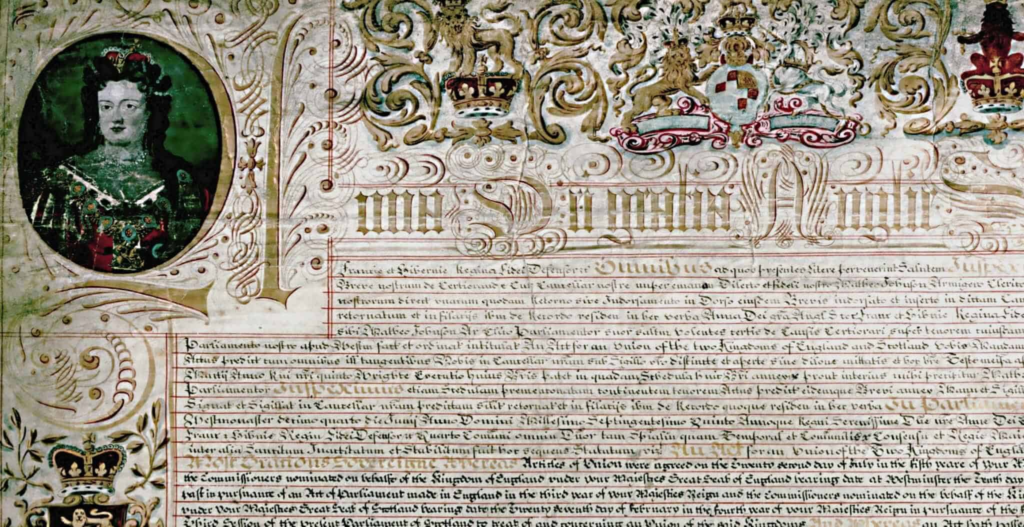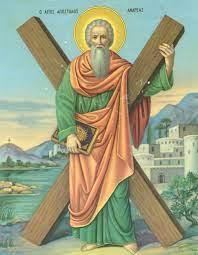Saint Andrew was one of the original twelve apostles of Jesus, he was the elder brother of Saint Peter the founder of the Catholic church. Saint Andrew was born between 5 AD and 10 AD in a village called Bethsaida on the sea of Galilee, they were both fishermen when Jesus approached them, and they became Christ’s first disciples, His parents were Jona and Joanna. Jesus promised to make them both fishers of men and they both followed him.

Many will be aware of the parable (a simple story used to illustrate a moral or spiritual lesson, as told by Jesus in the Gospels) of Jesus feeding the masses with just bread and fish, it was Saint Andrew who brought the boy to Jesus to enable him to feed the masses which was done on the banks of Jordan.

It is recorded in the acts of Andrew that he travelled to The Black Sea and Asia Minor. Saint Andrew travelled to Synope(Sinop in now modern day Turkey) on the coast of the Black Sea, it was here the house he was in was almost burnt down. It is believed he went to Asia Minor twice more and Greece, reportedly Saint Andrew also travelled to Hungary, Russia and even as far a field as Poland.

It was in Synope he meet his brother Saint Peter, there they united and done the work of the ministry. The inhabitants were mostly Jews, who, “partly from a zeal for their religion and partly from their barbarous manners, were exasperated against him, and entered into a confederacy to burn the house in which he judged. But being disappointed in their design, they treated him with the most savage cruelty, throwing him on the ground, stamping upon him with their feet, pulling and dragging him from place to place; some beating him with clubs, some pelting him with stones, and others, to satisfy their brutal revenge, biting off his flesh with their teeth ; until, apprehending that they had entirely deprived him of life, they cast him out into the fields. But he miraculously recovered, and returned publicly into the city; by which, and other miracles that he wrought among them, he converted many from the error of their ways and induced them to become Disciples of Jesus.” He afterwards returned to Jerusalem.
Saint Andrew also travelled to Thrace, Macedonia, Thessera, Achaia, and Epirus, spreading the word and converting large numbers of the inhabitants. Saint Andrew was arrested by the Agenas(In north western Greece), they attempted to force him to renounce his faith to which he refused. Sources say he was treated with severity, it can be assumed they tortured him. It is reported that on the 30th of November 69 AD Saint Andrew was crucified on a cross which is known as a Crux decussata. Saint Andrew requested to be crucified on a diagonal cross as he did not feel worthy be crucified on an upright cross of Christ. Unlike most crucifixions of the time Saint Andrew was bound to the cross rather than nailed. It is said Saint Andrew lived a further three days and continued to preach until his death.

It is unclear as to how Saint Andrews remains ended up in Scotland, there are two accounts as to what may have happened. An Angel appeared to Saint Rule and told him to take the bones he had hidden and go west by ship, wherever they were shipwrecked he should lay the foundations of a church. The Angel prophesied pilgrims would travel to the shrine to receive health of both body and soul. Saint Rule’s was later shipwrecked in Fife near an area called Muckross. The village at the time was called Kilrymont which later became known as Saint Andrews. It is said halfway between the castle and the harbour is where Saint Rule’s cell is located. When Saint Rule landed he meet with a Pictish king (Angus Mac Fergus) and promised him victory over his enemies. It is said during the battle a saltire cross was seen in the sky; this gave Angus forces the heart to win the battle. The King ordered Saint Andrews cross become the badge of the Pitcs.
This story may have been modelled after the victory of the Roman Emperor Constantine in 312 AD at the Milvain bridge at the banks of Tiber when he became convinced in the power of Christ. The emperor was convinced he saw the symbol of Christ in the rays of the setting sun.
The true route of the bones may never be known, however what we do know for certain is in 908 AD, the only Bishop in Scotland at the time moved from Abernethy to Saint Andrews, the town rapidly became known as a pilgrimage location.
During the reign of Queen Margaret and Malcolm Canmore it wasn’t uncommon for Scottish soldiers to fight in the crusades to honour Saint Andrew. Andrewmas which is now Saint Andrews Day was started during this era too.

Saint Andrew is patron of Russia and Greece but has special significance for the Scots. The Declaration of Arbroath (1320), written by Scottish clergymen to Pope John XXII, was an appeal to the Pope against the English claim that Scotland fell within the jurisdiction of the Archbishop of York.
In the 1300’s Saint Andrews cathedral became known as the Canterbury of the North. In 1411 Saint Andrews university was founded. In 1472 Saint Andrews was raised to Metropolitan status.
In 1603 the new King James I of Scotland and IV of England attempted to make one united flag, the Scots resisted this as the Saltire cross had been given an inferior position within the flag. It was said that Scottish ships at sea persisted to fly the Scottish flag at sea. In 1707 the act of union was passed in Parliament, although the red Lion Rampart was the official royal flag for Scotland, the national flag of Scotland is Saint Andrews cross.

The Declaration argues that the Scots were a distinct people who had long enjoyed the protection of Saint Andrew, brother of Saint Peter. Saint Andrew is described in the Declaration of Arbroath as “our patron or protector”.
At the Battle of Bannockburn, near Stirling in 1314, the Scottish soldiers had worn the white cross of St Andrew on their tunics and before the battle began they knelt in prayer, invoking his protection.
Four years later Robert the Bruce, at the dedication of St Andrews Cathedral on 5 July 1318, placed a parchment at the High Altar expressing nation’s thanks to the saint.

William Wallace’s battle-cry was “St. Andrew mot us speed” (May Saint Andrew support us). Prior to the disastrous Scottish defeat at the Battle of Flodden in 1513, a great many Saint Andrew’s crosses were made at the Boroughmuir in Edinburgh.
Mary, Queen of Scots’ forces carried the saltire at the battle of Carberry; many Jacobite flags in the ’45 Uprising also displayed the saltire. It soon became incorporated into the official badges of Scottish regiments. There was even a Saint Andrew coin issued by Robert II and a bawbee Scots halfpenny marked with the same cross.
In modern times, the bones of Saint Andrew once more returned to Scotland. In 1879 the Archbishop of Amalfi in Italy (where the bones had been brought in 1453 after the fall of Constantinople) sent to Edinburgh what was believed to be the shoulder-blade of St Andrew.
At St Peter’s, Rome in April 1969, Pope Paul VI gave another relic – part of the skull of the saint – to Cardinal Gordon Joseph Gray, at that time Archbishop of St Andrews and Edinburgh. “Peter greets his brother Andrew,” were the words of the Pope to the Archbishop. The relics of the Apostle are today displayed at St Andrew’s altar in the Metropolitan Cathedral of St Mary in Edinburgh. At Saint Andrew’s Cathedral by the shore at Patras, Greece other parts of the skull of Saint Andrew are cherished in a place of honour.
While it is permissible to be sceptical about the authenticity of relics, there can be no doubt about the value of an annual celebration of Saint Andrew as representing strength and curiosity, two qualities which are by tradition very much part of the Scottish psyche.
Next up will be the history of Kirkcaldy in brief!



Hello! I know this is kind of off topic but I was wondering if you knew where I could find a captcha plugin for
my comment form? I’m using the same blog platform as yours and I’m having trouble finding one?
Thanks a lot!
My brother suggested I might like this website He was totally right This post actually made my day You cannt imagine just how much time I had spent for this information Thanks